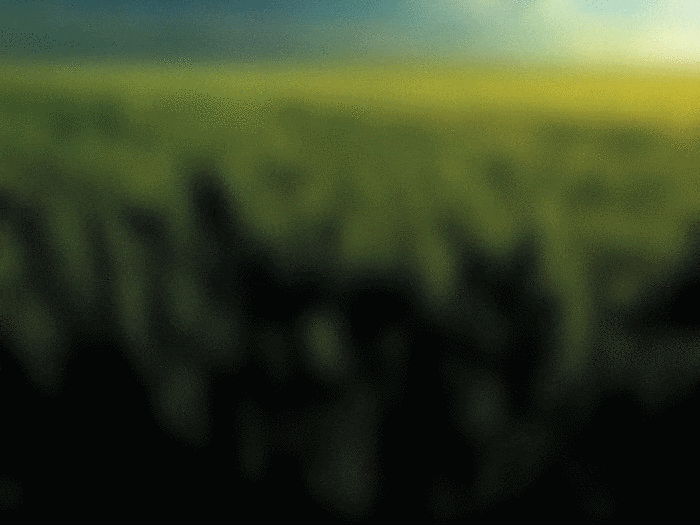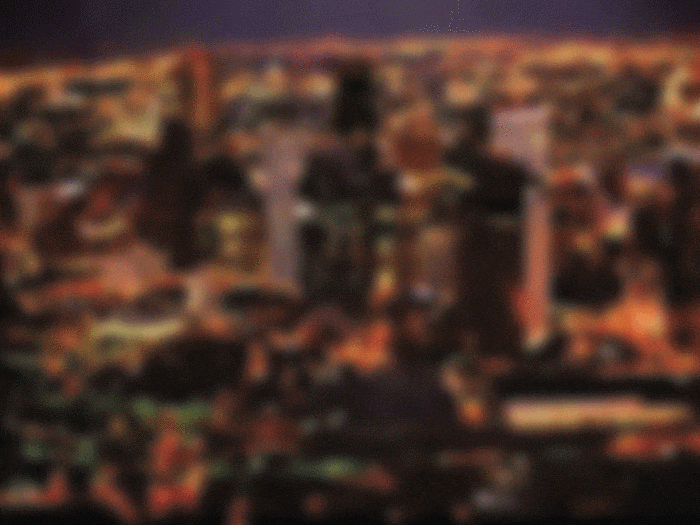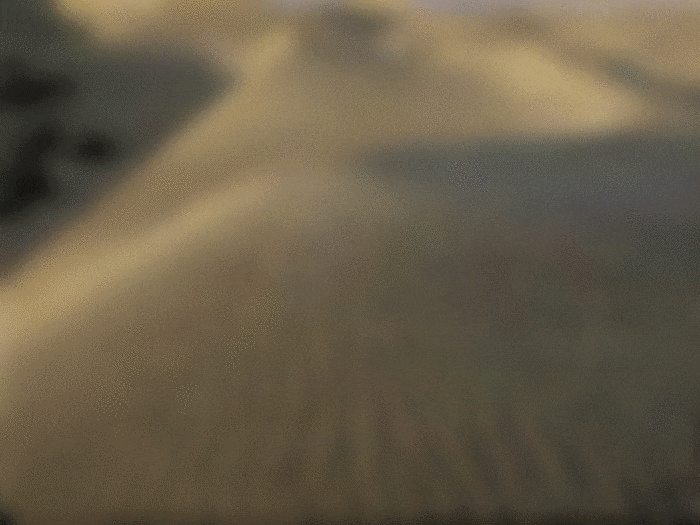
3. Couture Cosmetique: Transgendered electroacoustique symptomatic of the need for a cultural makeover (Or... What's behind all that foundation?)
In this republication of the liner notes to Couture Cosmetique (1997), Terre Thaemlitz suggests that digital production tools allow uses of audio that readily draw a comparison to nonessentialist transgendered critiques of representation and the body. By rejecting the normative concepts we project onto technology, Thaemlitz points toward what other visions of the human might be freed up in the process.
Written in 1996 and lightly edited for the current publication. First published with the audio CD of the same name (US: Caipirinha Productions, 1997, CAI-2002-2; Japan: Daisyworld Discs, 1997, SYDW-0005). Endnotes marked “COMMENT” are newly added for this edition and not part of the original text.
[Music’s] order simulates the social order, and its dissonances express marginalities.
—Jacques AttaliJacques Attali, Noise: The Political Economy of Music. Manchester: Manchester University Press, 1985, p. 29.
While the development of Queer-positive imagery and graphics exploded with AIDS activism in the 1980s, sonically we have little more than, ʻHey-hey, ho-ho, Homophobia’s got to go!’
—Dont RhineDont Rhine, co-founder of Ultra-red, from personal correspondence, ca. 1994.
It has been suggested by myself and others that certain subgenres of what has come to be known as Contemporary Ambient music propose a complication of cultural processes by subverting the spectacle of melody and questioning the social functions of active and passive listening techniques. COMMENT 1 Similarly, while the genre remains dominated by male producers and cannot claim to transcend the conventional heterosexism and gender biases of the electronic music industry, it incorporates discourses that involve the active disclosure, inversion, and convolution of sonic and experiential relationships. The result is a vehicle of layered contents and contradictions that extend to the very manner in which it allows for the generation of multiple political discourses, while most forums for reception are despairingly apolitical and humanist in tone (an often frustrating passive-aggressive circumstance).
To exemplify this concept of contingency upon the contradictory, the sounds developed for Couture Cosmetique emphasize residual noises produced by some of today’s more popular digital synthesis techniques—including granular synthesis, pitch/time convolution, and heterodyne filter analysis—bringing into focus those sounds that currently exist in a repressed state at the periphery of popular contemporary music production. In this manner, the limitations of such audio technologies are used to intimate new functionalities, which remain excluded or omitted from popular development—a metaphor that may be applied to the construction and utilization of post-industrial technologies in general.

large
align-left
align-right
delete
“Technology” per se, particularly in its role as a medium for the development of First World cultures, becomes politicized with connotations of the contexts it fosters. These connotations are multifaceted, ranging from expanded agricultural production, to environmental destruction; from the identification of a glandular enlargement in the brains of “Homosexual men” embraced by some as an essentialist“Essentialist” refers to the conceptualization of identities that purport to reflect a primal “human essence.” A “nonessentialist” outlook, favored herein, refers to the conceptualization of identities as a strategy for self-mediation within a politicized social context. In nonessentialist terms, any identity construct’s claim to embody a “human essence,” be it Heterosexuality, Lesbianism, Gayness, Bisexuality, Transsexuality, etc., is understood for its social function as a means to justify the social orders it serves by disavowing its potential for social changeability. Nonessentialism attempts to complicate arguments of biological determinism by emphasizing that the application of a sense of propriety is an inevitable and inextricable social process, and that senses of propriety are contextual, and hence mutable and more viable as a philosophical basis for incorporating social differences. Nonessentialism is to be differentiated from a concept of “Nurture over Nature,” in that the former rejects the dichotomy of Society vs. Nature, as such a dichotomy proposes the teleological emergence of a purely learned (purely comprehensible) self. argument for social acceptance in its identification of Lesbian and Gay desire as an extra-social experience of Nature, to the use of genetic research as a means of reducing social aberration; from the internet as a means for women to foster global associations and increase visibility in technological fields typically dominated by men, to the overwhelmingly male-oriented Heterosexism and Gay-male bias of internet porn; from the marketing of toy weapons and machinery for boys, to the marketing of baby dolls and domestic toys for girls. Thus technologies come to have multiple associations with gender and sexual orientation in popular media and “counterculture” discourses, both of which emphasize (critically or non) the use of technology to perpetuate and expand patriarchal First World marketplaces. Since it is through my interactions with such technologies and discourses that I mediate a sense of self, the metaphorical implications of electroacoustic audio production range from the hyperpersonal to the socially dissonant.

large
align-left
align-right
delete
I have found that this methodological framework for constructing audio has many similarities with nonessentialist factions of transgenderism (from gender confusion to Drag Kings and Queens), which also seek to complicate social processes. Transgenderism does this by actively questioning constructions of gender and sexuality, while its exploitation of essentialist constructs of femininity and masculinity references social contextuality. It is this referentiality that I feel makes nonessentialist transgenderism a more viable platform for gender analysis than essentialist transgendered methodologies, which propose a transcendental breach from those cultural influences they critique. However, as with apoliticism within the Contemporary Ambient genre, transgenderism’s ability to develop such analyses is largely overwritten by larger factions and popular discourses that embrace essentialist concepts of sexual and gender identities.
From laser discs to laser surgery, both Contemporary Ambient and transgenderism use post-industrial technologies as mediums of representation. Both embrace and abuse stereotypical applications of such technologies, and both must define such processes of recontextualization in relation to dominant social orders. The result of these abuses is not a neutralization of signifiers but an outgrowth of imbalances that serve to complicate the very orders with which they are in dialogue. I disbelieve Contemporary Ambient’s and electronic music’s ability to be adequately disassociated from masculine and patriarchal signifiers to represent a convincing fiction of androgyny (or femininity, for that matter). However, as is the case with androgyny, the circumstance does not gain impact through processes of gender disassociation as much as through an ability to embody simultaneity and contradictions of desire.

small
align-left
align-right
delete
It may be argued that all forms of recorded music are implicated in such a process of signification through the simultaneous dissolution of authorship via mass production, the essentialization of authorship and originality via the idolization of performers, and the manner in which we learn to author personal contents and possessiveness upon music we “love.” But what is of greater interest to me are means of production that seek to actively disclose these operations yet also acknowledge the limitations of their ability to identify such disclosures. For example, the transformation of Walter to Wendy Carlos amid the recontextualization of classical music from a purist acoustic (Natural) state to one of technological resynthesis (released by the apropos Trans-Electronic Music Productions, Inc.). Scanner’s utilization of audio voyeurism to construct an acoustic “Male gaze.” Laurie Anderson’s use of narrative performance and spectacle as a metaphor for processes of self-identification amid the “Male gaze.” Oval’s dislocation of authorship and process as a disavowal of Modernist gestures (implicit with testosterone-driven angst), and their simultaneous recuperation into a concept of the Modernist avant-garde. Insook Choi’s emphasis on the construction of audience and active observation techniques in the development of interactive audio media at the National Center for Supercomputing Applications, Urbana, Illinois. And the ensuing contradiction between a desire to move away from the elitism of “Virtuoso/Master Listener” paradigms and its foiling by a contingency upon public access to largely unavailable technologies.

large
align-left
align-right
delete
Discussions of such productions’ ability to disclose and destabilize conventional processes of signification are hindered by dominant cultural discourses’ identification of subjective contents as differentiated from and prioritized above the social contexts in which such contents are developed and mediated. Press and producers alike ponder the Death of Ambient™, a death mandated by popular individualist ideologies’ incongruity with compositional practices that diffuse the subject in relation to her or his environment. COMMENT 2 Others attempt to recuperate Humanist and Universalist philosophies into this process of diffusion through the construction of Ethnoambient and Fourth World musics, genres that typically use samples of Third World instruments to invoke First World fantasies of the “Tribal.” However, such genres’ reliance upon essentialist fictions of an extrasocial condition of kinsmanship that is external to First World processes of cultural exchange (as defined by the necessity for Third World signifiers) results in a dichotomy that unintentionally excludes the First World Humanist subject from that extrasocial space s/he claims to inhabit in essence. Such types of music not only serve to conceal the social mechanisms that foster essentialism, but they also contribute to the construction of Diasporas through their imperialist suppression of localized contexts and contents.

large
align-left
align-right
delete
And yet, even in my most fervent disagreement with essentialist ideologies, I cannot ignore their pervasiveness in my own actions. I am plagued by half-awareness of the internalized processes of reification and fetishization that have led me to use audio and transgenderism as expressive mediums. I find that my actions must satiate simultaneous, and often oppositional, desires for personal catharsis and audience engagement. The former can lead to an over-aestheticization of the amorphous production strategies I hail, obscuring and reducing my intentions to trivia for private coveting or disclosure through addendums.For example, “Abandoned Left” focuses on feelings of paranoia and ineffectiveness among activists amid popular anti-Leftist sentiments and self-critique. To exemplify this condition, but largely obscured from observation, the track is constructed from digital analyses of fade-outs from 1970s jazz and R&B titles (perpetual moments of abandonment from music with both Leftist and populist connotations). The latter typically involves compromises of content arising from the desire to establish dialogue with discourses I oppose. COMMENT 3

large
align-left
align-right
delete
The amalgamation of these pursuits is my consumption by activities that seek to actively incorporate their inability to coalesce into a singular content or propriety—an incorporation that is not a disavowal of strategy nor an assertion of functionality, but an acknowledgment of the cosmetic modality of all actions. Cosmetic in their ability to impart social order and arrangement (implicit in aestheticism), as well as in their intentional and unintentional concealment of social agendas; modal in their expression of moods and outlooks of the politics they reflect. Couture Cosmetique is a manifestation of this “critical cosmetology.”

large
align-left
align-right
delete
COMMENT 1: Although the term “Contemporary Ambient” may still apply to much of what is happening in today’s Ambient ouvre, I was specifically referring to that odd window of commercial viability from 1985 to 1995, during which Ambient audio was often heard in comedown rooms at raves. At its peak, the sound was perhaps most typified by the three UK producers the Orb, the Future Sound of London, and Aphex Twin. Basically, everything between Industrial Ambient of the early 1980s and Laptop Orchestras of the early ’90s. Keep in mind that this text was the liner notes to a commercially distributed album in a genre typically represented by cheap 3D computer graphics, holograms and P. L. U. R. (Peace, Love, Unity, Respect) spiritual jargon. So, on the one hand, the heavy-handed pseudo-academic flavor of this text was a reaction against the shallowness of the commercial audio marketplace. On the other hand, this injection of thematic content into a commercial CD was also a rejection of the notion that academia was the sole site of production for critical minded or “culturally important” computer music.
COMMENT 2: The US economic bubble around Electronica and Contemporary Ambient music burst around 1995–96, triggering a massive retreat of interest in ambient music from both record labels and music distributors. At that time, there was a major shift of Ambient producers toward more easily marketable Drum ‘n’ Bass, Jungle, and Enigma-esque Ethno-audio-imperialism. I placed a trademark sign after the phrase “The Death of Ambient,” because at the time the expression was commonplace among industry folk and press. It functioned as a marketing justification for continuing to only invest in productions by producers with “star potential”—closing the door on a short-lived period of support for fringe productions and producers critical of authorship and ego branding.
The signs of this shift were long coming and were the reason I cynically began releasing my Contemporary Ambient productions under my real name, “Terre Thaemlitz,” as early as 1994, with Tranquilizer (Instinct Records). Using my actual name rather than a project alias was a cynical gesture indicating my concerns about the problematic ways labels and press invariably censored non-ego notions of production. While they spoke of the “Death of Ambient” as a mystery, their bewilderment was simply a smoke screen for their own witting or unwitting roles in the genre’s cultural “homicide” by insisting the genre be marketed and sold like any other pop music.
At the time, the alternative to producing Drum ‘n’ Bass or some other market-friendly techno variant was to become a “Sound Artist.” There is no doubt that the late ’90s revival of Sound Art within Fine Art marketplaces was a direct result of the large pool of unemployed Ambient and Experimental audio producers scrambling for work in other arenas. This peaked in the early ’00s, not in small part due to the 2003 bankruptcy of EFA, one of Europe’s largest electronic distributorships. Their closure had a domino effect of bankrupting many of the smaller labels they represented, the Frankfurt based label Mille Plateaux, which was one of the most important commercial outlets for electroacoustic audio and would release the bulk of my electroacoustic and piano solo albums between 1997-2003. Of course, curators, galleries, and museums refused to acknowledge any connection between their “rediscovery” of Sound Art and the economic crises happening in global audio marketplaces. Many audio producers with extensive careers were being portrayed in the arts as newcomers out of nowhere, who owed a cultural debt to art curators for their discovery. In reality, the curators were using the established cultural knowledge and expertise of such producers to enable their marketing of a Sound Art trend.
COMMENT 3: I remember being very frustrated at that time by the way CD packaging budgets restricted the amount of text I was allowed to include in any given release. This meant most of my texts were limited to simply setting up the contextual framework of an album, with no space for in-depth particulars about the themes and technical processes behind individual tracks. And, as the last sentence of this paragraph states, in addition to the issue of limited space, I was submitting to a good deal of self-censorship and half-hearted “positivity” to get labels to release my work (i.e., the “positivity” of projecting notions of social momentum and cooperation among producers within the audio marketplace, and the possibility for conscious social change). “Negativity” in Ambient music was reserved for Industrial Ambient and Punk (which was not interesting to me), the market for which had died years ago (and so not interesting to labels and distributors). There was no room for negative thinking in the “triptastic” world vision offered by ’90s electronica and rave culture. Everything needed a positive spin. As a case in point, consider the perky conclusion of the Caipirinha press release for this album: “The result is challenging, confrontational, humorous, at times frightening, yet uniquely beautiful—indicative of Thaemlitz’s reservedly optimistic vision of the possibility for contentment through alternatives to dominant cultural methodologies. It’s an Ambient trip on a collision course with reality that you can’t afford to miss.” Oof.
All images courtesy of Comatonse Recordings